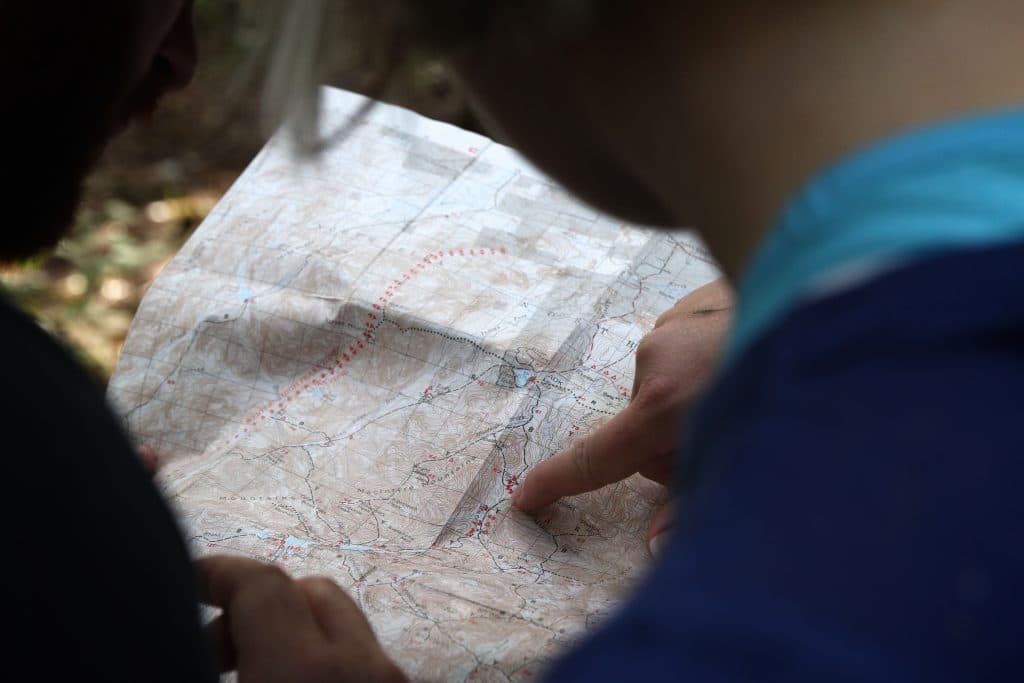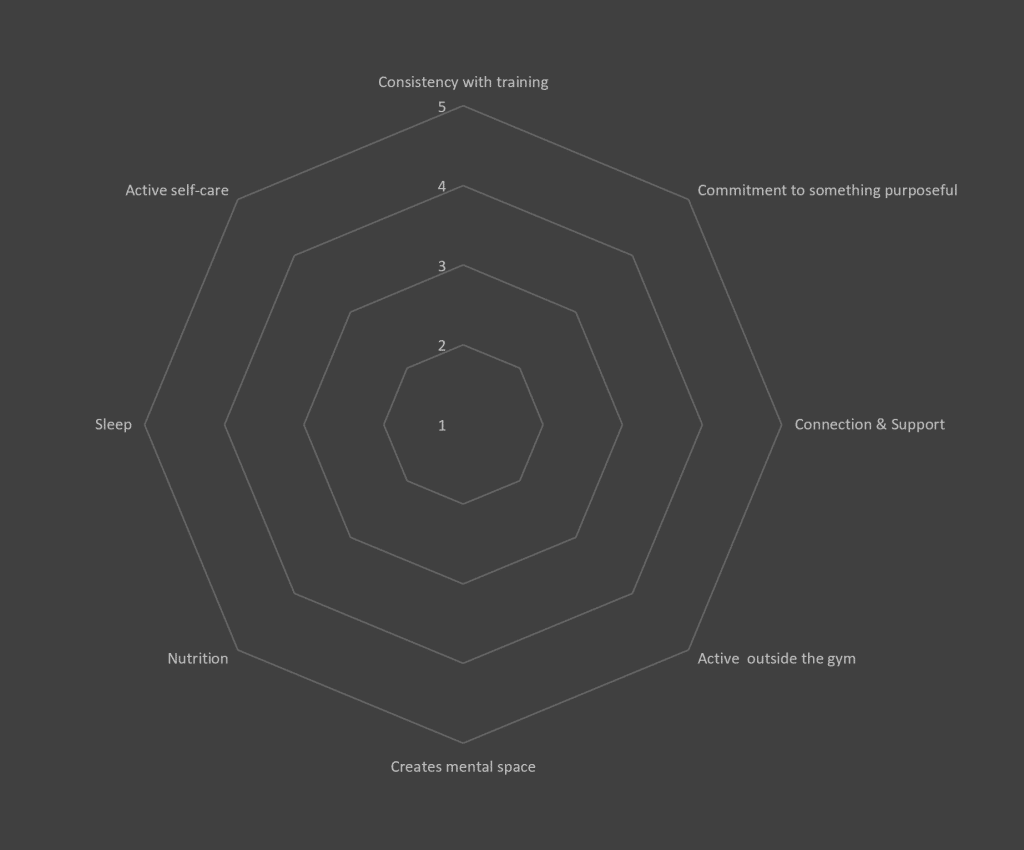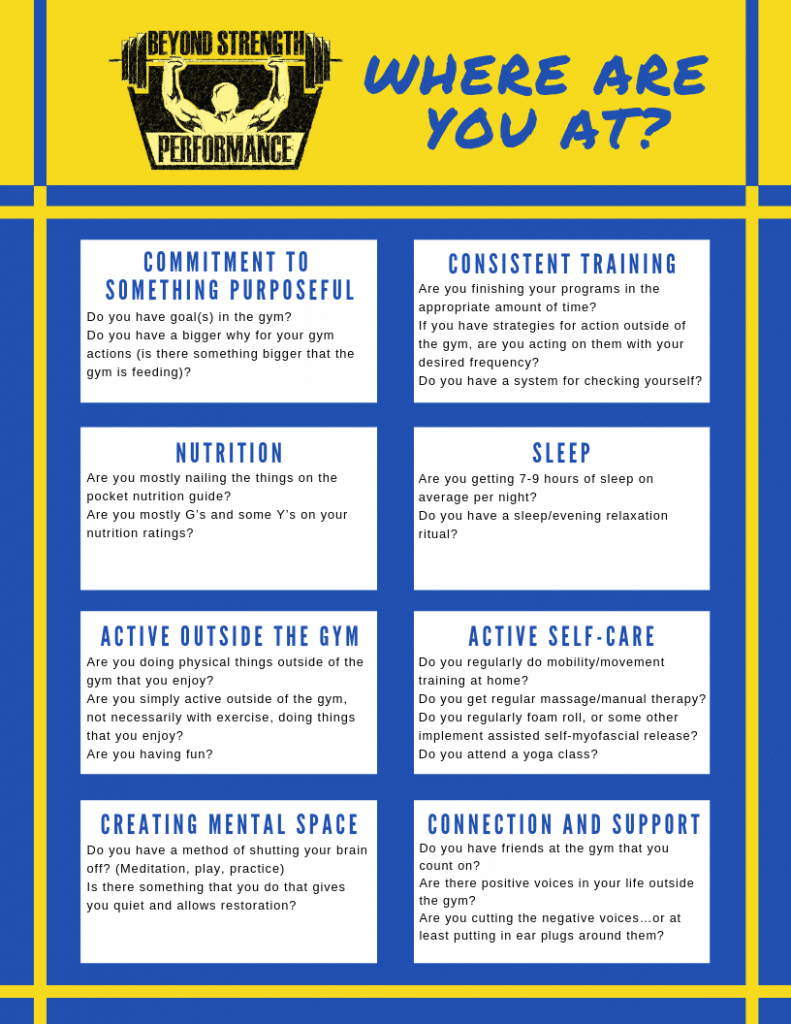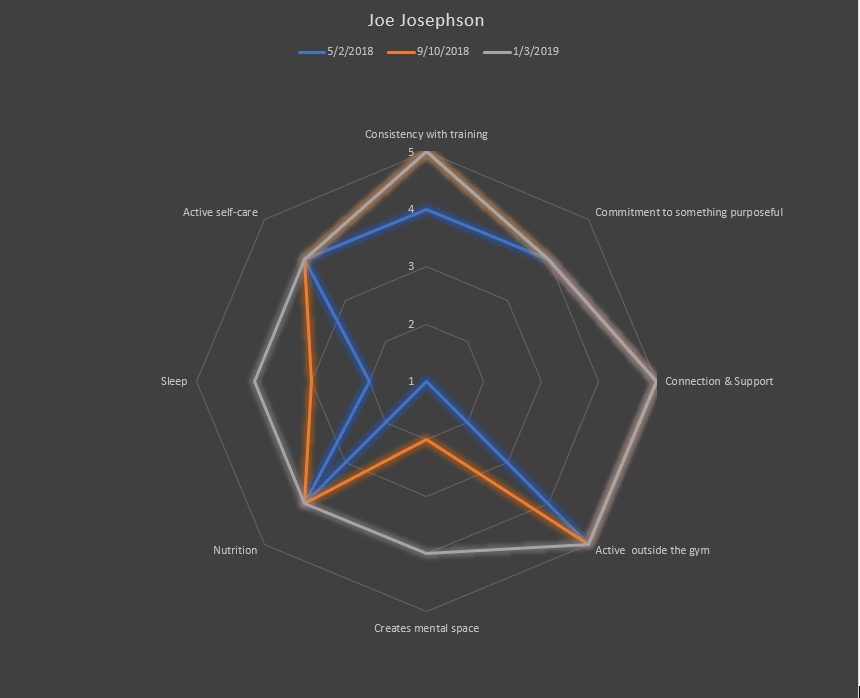“A big reason that people have a hard time setting goals, and projecting themselves into the future, is because they don’t have a good handle on where they’re actually at.” – Todd Bumgardner
Where are you at? I don’t mean that literally, since I’m not trying to find you, but rather regarding your life. Are you physically, emotionally, spiritually, and professionally where you want to be in life? Do you feel something is holding you back from achieving the life you want, but you can’t put your finger on what that is? If you answered yes to some of those, or even all of those questions, you’re not alone. It’s challenging to determine where we’re at in our lives, because it requires a lot of introspection.
It doesn’t always have to be challenging though, so long as you have the right tool.
It’s hard—impossibly hard even—to get where we want to go, if we don’t know where we currently are. It would be like trying to drive to somewhere specific, while using a map, without knowing your current location. Needless to say, but that drive probably won’t go too well.
At BSP NOVA, we developed a tool that we call the “Where Am I At Wheel”. The wheel is a tool that we use with our clients to help them gain clarity on where they’re at in their life, so that we can guide them towards where they want to go.

Before we get into the specifics of using the wheel, and how it helps us place our clients in the best positions to be successful, let’s look at how it was created.
Creating the Where Am I At Wheel
Four score and seven years ago, a new kind of wheel was invented. Okay, it was actually about a year ago at one of our weekly BSP NOVA staff in-services, during which we asked ourselves a few questions:
- “Who are our most successful clients?”
- “What things do they share in common that make them so successful?”
- “Why are coach Greg’s ankles so small?”
While we’re still working to solve that third one, the first two questions were used to determine different qualities and behaviors that helped successful clients have huge transformations in our gym. These people were doing something right, and we wanted to dig a little deeper to better understand what those things were.
What we gained from that discussion was the “Where Am I At Wheel”, which consists of 8 spokes:


How Do We Use The Wheel?
Although the “Where Am I At Wheel” could theoretically be used anytime we desire, we primarily use it during our End of Block (EoB) meetings. For those non-BSP NOVA’ers out there, our EoB meetings are essentially long-term planning sessions that occur every time our clients complete four phases of training—usually every 4-6 months, depending on how many days per week they train.
While there are many components and options that our clients can choose to utilize during their EoB meeting, one involves a coach walks them through creating their wheel.
The coach and client work through the 8 spokes of the wheel, rating each spoke on a scale of 1-5—a rating of one means the client feels they aren’t doing well at all for that area, while a rating of 5 means they feel that they’re nailing it. For example, if someone said they ate McDonald’s nine and a half times a day they would probably rate their nutrition as a 1.
“Transformation requires two things. Those two things are AWARENESS and PROCESS.” – Todd Bumgardner
By going through the process of rating themselves on each spoke of the wheel, clients gain awareness of where they’re at. And it’s this awareness that provides the opportunity for transformation. With the gained clarity on which areas they are currently excelling at, as well as areas where they aren’t doing so hot, it’s up to the client to decide whether and where they are ready, willing, and able to begin working on their wheel.
Maybe, through this process, they become aware that they are not doing anything to purposefully create mental space, but they also aren’t ready, willing, and/or able to act on that. That’s totally cool. Or, maybe they become aware and they do decide that they’re ready, willing, and able to act on it. That’s totally cool too. Either way, having this awareness is a crucial starting point.
The Wheel in Action

The above image is a fake wheel I created to show you how the “Where Am I At Wheel” can serve our clients in reaching their goals. If you look to the top of the image you will see three different dates with three different colors. The blue line shows a wheel created on 5/2/2018, the orange line depicts a wheel created on 9/10/2018, and finally the grey line depicts a wheel created on 1/5/2019. We overlap the wheels each time a client goes through the EoB meeting so they can see the changes to their wheel overtime.
When we took our fictitious client Joe Josephson through the wheel the first time, he and I noticed that he rated himself low on “Creates Mental Space” and “Sleep.” This process gave Joe awareness to the fact that he was not doing well with creating mental space for himself. He knew he didn’t get the best quality and quantity of sleep, but seeing it on the wheel helped him see that in a new light.
So I asked him,
“Joe, is there any part of this wheel you would like to improve?”
Joe responded,
“Not really. I understand that it could help to work on sleep and creating mental space, but I’m not ready to commit to that.”
Which is totally fine.
When Joe came back in for his second EoB meeting, though, he explained that he had thought about the wheel and realized he wanted to make a small change after all. He figured he didn’t have anything to lose by trying to create mental space, and decided to give it a shot by starting to meditate.
His plan was to meditate in the evenings for 5-10 minutes after work. What he found was that while he felt it helped, he had trouble doing it on a consistent basis since he always felt like he needed to be “productive.” With this understanding, we troubleshot some ideas that could help him be more successful with it, and he left feeling ready, willing, and able to act on those ideas.

When Joe came back for his third End Of Block meeting I was happy to see he rated himself a 4 on both creating mental space and for sleep, and I asked him to tell me more about his experience. Joe explained that the idea of meditating right before bed had worked wonders.
In the past, Joe carried the days problems with him to the bedroom and fell asleep stressing about his day. Now, Joe meditates before sleep which helps him to calm those thoughts and, as an additional benefit, helps him sleep more soundly. He feels he has more energy for his workouts and life in general, and notices less stress overall too.
Without the “Where Am I At Wheel”, Joe most likely would never have made these changes. We must know where we currently are to get where we want to go. Joe knew that he wanted to have more energy, feel better, and achieve his other goals in the gym, but he didn’t know what was holding him back. With the help of the wheel he was able to assess where he was, create a plan for improving those areas, and act out that plan to transform his quality of life.
